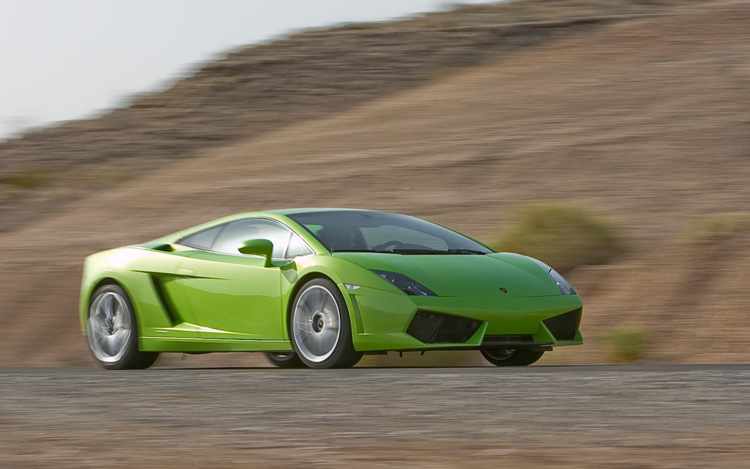
During 2008, North American motorists discovered an international reality that we had been held safe from for over thirty years. Gasoline costs money. Rising fuel costs actually impacted North American motorists and we flooded the dealerships searching for vehicles that were more economical to operate.
The result of this panic was an endless supply of SUV’s for a fraction of their apparent value. No one would buy them new or used, at any price. By summer, automakers and dealers had become overstocked with large luxo-barges as consumers opted for more fuel-efficient vehicles. Hybrid sales boomed, as did sales of smaller cars and lighter trucks. We were all singing the praises of the new generation of green vehicles (not the Verde Ithaca green of the LP560 above, mind you) and we began to purchase these regardless of the premium they commanded over their less green alternatives. Then, something odd happened, fuel prices fell about 15%, then 50%. With this perhaps temporary adjustment in fuel pricing, our interest in the new Eco-Box automobiles subsided.
This raises an interesting question. Which shade of green are we really interested in; the green in our wallets or the green in our environment?
This is an interesting question because we all need to be fiscally responsible and the purchase and the operating cost of a vehicle is not a small expenditure. Most of us would also not want to hurt our environment any more than we have to in order to fulfill our responsibilities in a timely manner. Today, “in a timely manner”, requires an automobile for most of us because our metropolitan areas are vast and our time is precious. We need to get to places quickly and efficiently.
I think the answer to this “green” question for the majority of motorists is: both shades of green. We want to drive as cost-effectively as we can while making a minimal impact on the environment.
I have two suggestions that might help most motorists achieve this goal. The first is to own your vehicle for longer, the second is to learn to drive it more cost efficiently.
The modern vehicle is a wonderful piece of technology; most are built to last much longer than we own them. It is also safe to say that most of us have become dependant on the vehicle’s warranty, feeling that this piece of security is saving us money. I think I can say, without risk of contradiction, that the average vehicle produced today will serve its owner for a minimum of 10 years, yet we tend to own them for an average of 4 years.
If we say that the depreciation on an average $35,000 new vehicle is 20% per year, that means the owner loses $7,000 in the first year. But if we take that $7,000 and apply it to their previous car, they should be able to pay for all their maintenance and servicing for another five years. That’s four extra years.
We can also save money on operating costs by learning to drive properly. Fuel economy, for example, is impacted by how and when to use the right-handed pedal. Smooth, progressive application of the throttle will save fuel in town, as will releasing the throttle earlier when coming to a stop sign or traffic light. Reducing your cruising speed on the highway is another good method of saving fuel. Just a small reduction can pay great dividends. I tested this theory myself on a 300KM drive last year and gained 30% by limiting my speed to 110kph. My usual 10L/100KM became 6.8L/100KM. All I did was avoid rapid acceleration and limit my top speed to about 10% over the posted limit. What would this do to your yearly fuel bills? Less fuel burned equals a greener driver and a better environment for our future.
Now we can see how it is possible to attain both shades of green (Verde Ithaca notwithstanding). If we purchase a sensible vehicle for our needs, own it for a longer period and operate it more efficiently we are all making a valuable contribution to our environment as well as our pocketbook.
The CarEnvy moral of the story is: go buy that lime green Gallardo LP560. Just be sure to keep it for a couple extra years and don’t be so hard on the gas pedal.

